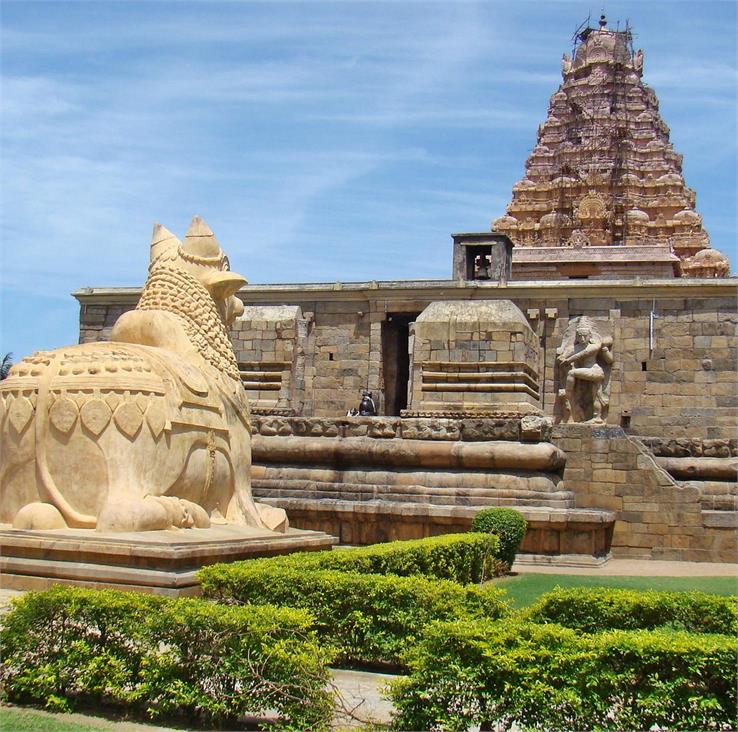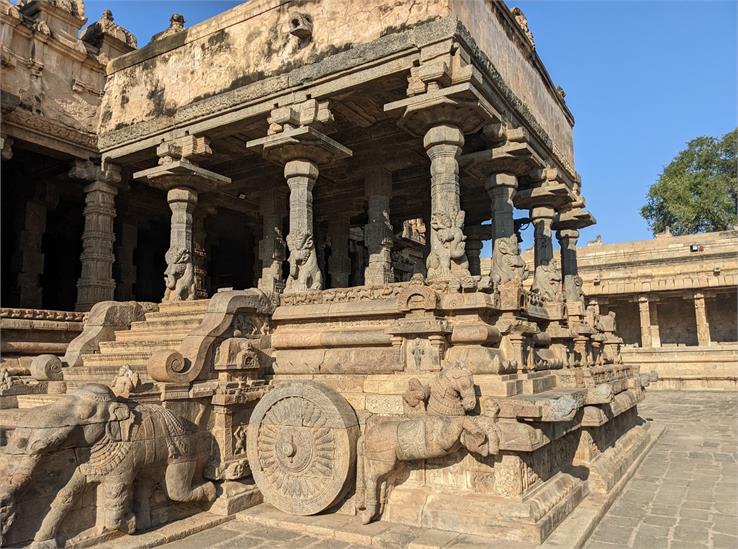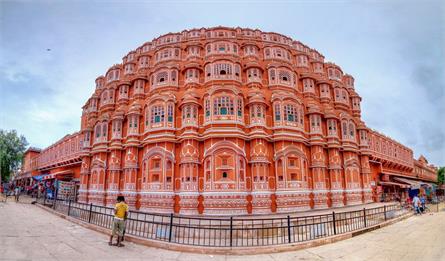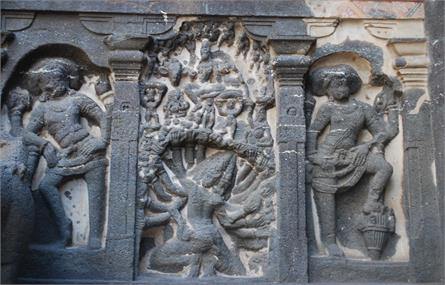Chola Temples: The Great Representation of Art

In the heartland of South India, amidst the lush green landscapes of Tamil Nadu, lie the magnificent Chola Temples, a testament to the architectural genius and spiritual devotion of the Chola Dynasty. These temples, built over a millennium ago, continue to awe and inspire visitors from across the globe.
Also Read: UNESCO World Heritage Sites in India
A Glimpse into History | A Cultural Oasis | Chola Temples History
The Chola Dynasty, which ruled South India between the 9th and 13th centuries, is celebrated for its patronage of art, culture, and religion. The Cholas constructed a vast network of temples, each a masterpiece of Dravidian architecture. The temples served not only as centers of worship but also as socio-economic hubs, fostering art, culture, and trade in the region.
Beyond their spiritual and architectural significance, Chola Temples have played a crucial role in shaping South Indian culture. They have been centers of learning, with inscriptions detailing various aspects of life during the Chola period, including dance, music, and literature. These inscriptions provide invaluable insights into the history and culture of the time.
Also Read: Chhatrapati Shivaji Terminus A Glimpse into Mumbai's Architectural and Historical Marvel
Architectural Marvels | The Dravidian Splendor
The Chola Temples are renowned for their exquisite Dravidian architectural style, characterized by towering gopurams (pyramidal gateways), intricately carved sculptures, and vast courtyards. Key architectural features include:
1. Vimanas (towering structures above the sanctum sanctorum)
The vimanas of Chola Temples are adorned with detailed carvings depicting scenes from Hindu mythology, showcasing the remarkable craftsmanship of the Chola artisans.
2. Mandapams (pillared halls)
These expansive halls are known for their intricately carved pillars, which often feature ornate depictions of gods, goddesses, and mythical creatures.
3. Gopurams
The entrance gateways of Chola Temples are marked by towering gopurams, adorned with colorful sculptures and intricate stucco work, making them a visual delight.
Also Read: Champaner-Pavagadh: A Must-Visit Site For History And Architecture Lovers
Chola Temples UNESCO World Heritage Sites
Several Chola Temples have been recognized as UNESCO World Heritage Sites, acknowledging their historical and cultural significance. Prominent among these are the Brihadeeswarar Temple in Thanjavur, the Airavatesvara Temple in Darasuram, and the Great Living Chola Temples collectively. These temples are not only architectural marvels but also repositories of history and spirituality.
Also Read: The Beauty of Buddhist Monuments Heritage At Sanchi
The Great Chola Temples
The Cholas' reign spanned over four and a half centuries and witnessed significant achievements in various domains, including military conquest, efficient administration, cultural assimilation, and the promotion of art. However, it's their architectural marvels that continue to captivate the world.
1. Brihadisvara Temple at Thanjavur: A Triumph of Chola Architecture
The Brihadisvara temple, also known as Dakshina Meru, stands as the pinnacle of Chola architecture. Constructed under the patronage of King Rajaraja I, it boasts a colossal colonnaded prakara, adorned with sub-shrines dedicated to the ashatadikpalas. The sanctum, situated at the center of the temple, houses a massive linga. The vimana, soaring to an astonishing height of 59.82 meters, is a testament to the architectural genius of its time. The temple walls are adorned with exquisite mural paintings, and the intricate sculptures narrate the tales of Saiva saints.
Also Read: The National Parks of India
2. Brihadisvara Temple at Gangaikondacholapuram: Rajendra I's Legacy
Rajendra I, son of Rajaraja I, built the Brihadisvara temple at Gangaikondacholapuram. This temple is renowned for its exceptional sculptures, including the masterful bronze icons of Bhogasakti and Subrahmanya. The Saurapitha (Solar altar) and the lotus altar with eight deities are considered highly auspicious.
3. Airavatesvara Temple at Darasuram: A Gem of Ornate Execution
Rajaraja II, during his reign, constructed the Airavatesvara temple at Darasuram. While smaller in size compared to the Brihadisvara temples, it compensates with highly ornate execution. The front mandapa, conceptualized as a chariot with wheels, features intricately designed pillars. The temple's sculptures, particularly the miniature friezes depicting the lives of 63 nayanmars (Saiva saints), showcase the deep roots of Saivism in the region.
Also Read: The Beautiful Taj Mahal
Spiritual Significance
Chola Temples remain active places of worship, drawing pilgrims and devotees from all corners of the world. The spiritual ambiance, the resonating chants, and the magnificent architecture create an atmosphere that transports visitors to a realm of divinity and inner peace.
Also Read: Hawa Mahal The Place of Winds
The Chola Legacy | Timeless Inspiration
The Chola Temples are not just relics of a bygone era; they are a source of inspiration for artists, architects, and historians worldwide. Their enduring legacy transcends time and serves as a reminder of the artistic and cultural heights humanity can achieve through dedication and devotion.
The Chola dynasty, one of the most illustrious ruling houses of South India, left an indelible mark on the region's history, culture, and architecture. Among their many accomplishments, the Cholas are renowned for establishing a powerful monarchy in the 9th century CE, centered around Thanjavur, and for their enduring legacy of temple construction.
Also Read: How Jyotirlingas Represent the Different Aspects of Lord Shiva?
Preservation and Authenticity
These three temples have enjoyed excellent preservation, with no major threats to their existence. The Archaeological Survey of India has diligently safeguarded these heritage sites, while the tradition of temple worship and rituals, rooted in ancient Agamic texts, continues unabated, making them living temples.
The authenticity of these temples is upheld through their continued use, archaeological evidence, and historical value. While minor additions and interventions have occurred over time, they have been in harmony with the original concepts, preserving the overall integrity of the structures.
Also Read: Agra Fort: India's Majestic Jewel of Mughal Architecture
Protection and Management
The Archaeological Survey of India and the Department of Hindu Religious and Charitable Endowments of the Government of Tamil Nadu jointly manage these temples. They prepare independent management plans, with occasional joint discussions to resolve conflicts. Their shared goal is to protect and promote these cultural treasures, maintain the Vedic and Agamic traditions, nurture traditional arts, and uphold the ancient science of temple construction.
Also Read: The Masterpiece of Indian rock art at Ellora Caves
The Great Chola Temples at Thanjavur, Gangaikondacholapuram, and Darasuram stand as unparalleled testaments to the Chola dynasty's architectural prowess and their deep-rooted connection to Tamil culture and history. As living monuments to a bygone era, they continue to inspire awe and admiration, inviting visitors to journey through time and discover the rich heritage of South India.
The Chola Temples stand as a living testament to the grandeur of a bygone era. Their architectural marvels, historical significance, and spiritual aura continue to captivate the hearts and minds of all who visit them. As we wander through the hallowed corridors of these timeless structures, we are reminded of the Chola Dynasty's enduring legacy, one that will continue to inspire generations to come.










